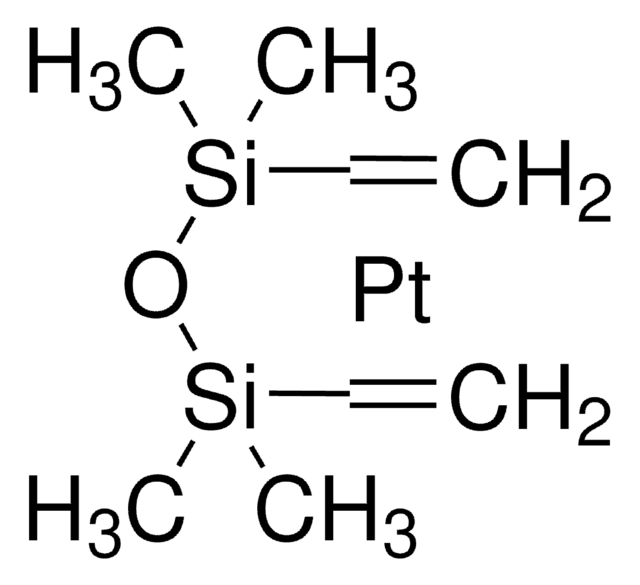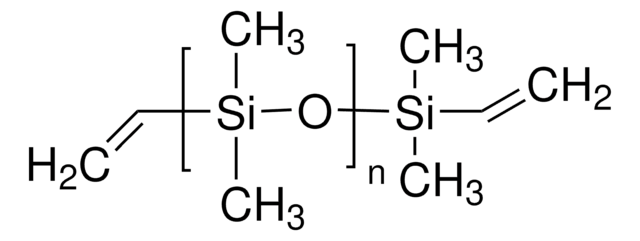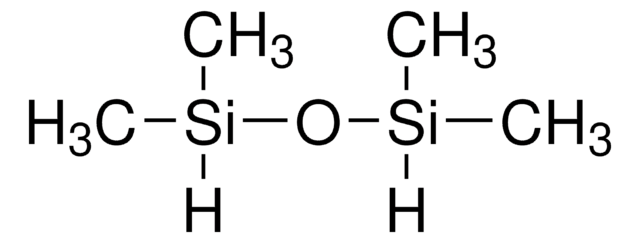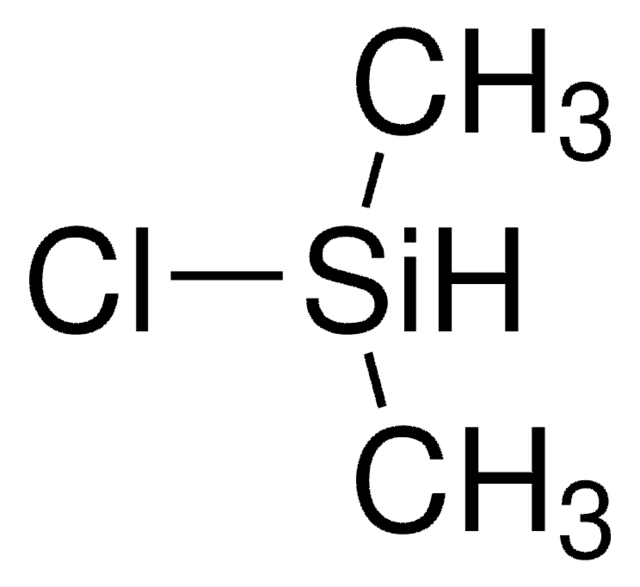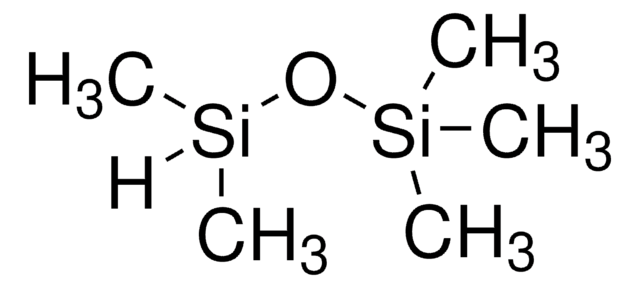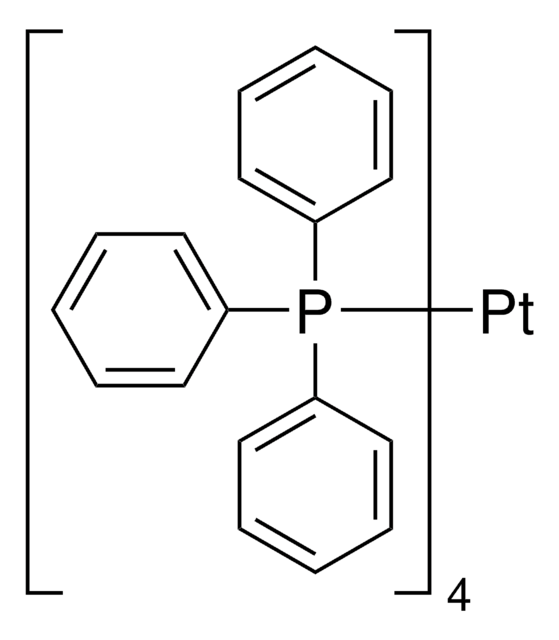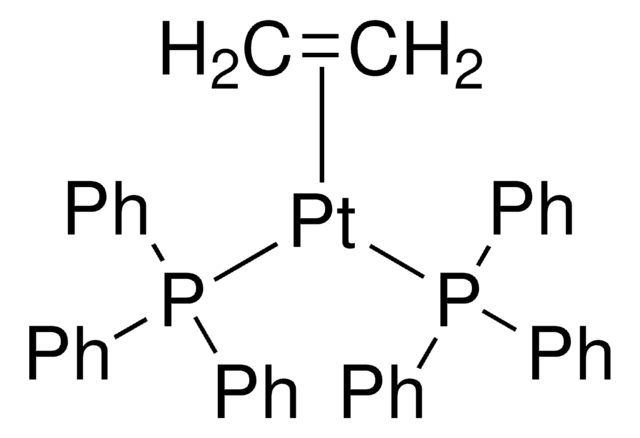479519
Platinum(0)-1,3-divinyl-1,1,3,3-tetramethyldisiloxane complex solution
in xylene, Pt ~2 %
Synonym(s):
Karstedt′s catalyst, Platinum(0) 1,3-diethenyl-1,1,3,3-tetramethyldisiloxane complexes
About This Item
Recommended Products
vapor pressure
7 mmHg ( 21 °C)
Quality Level
composition
Pt, ~2%
reaction suitability
core: platinum
reagent type: catalyst
concentration
in xylene
bp
138 °C
mp
12-13 °C
density
0.855 g/mL at 25 °C
SMILES string
[Pt].C[Si](C)(O[Si](C)(C)C=C)C=C
InChI
1S/C8H18OSi2.Pt/c1-7-10(3,4)9-11(5,6)8-2;/h7-8H,1-2H2,3-6H3;
InChI key
RCNRJBWHLARWRP-UHFFFAOYSA-N
Looking for similar products? Visit Product Comparison Guide
General description
Application
It has also been used in the reduction of carboxamides to amines.
signalword
Danger
Hazard Classifications
Acute Tox. 4 Dermal - Acute Tox. 4 Inhalation - Aquatic Chronic 3 - Asp. Tox. 1 - Eye Irrit. 2 - Flam. Liq. 3 - Skin Irrit. 2 - STOT RE 2 Inhalation - STOT SE 3
target_organs
Central nervous system,Liver,Kidney, Respiratory system
Storage Class
3 - Flammable liquids
wgk_germany
WGK 3
flash_point_f
77.0 °F - closed cup
flash_point_c
25 °C - closed cup
Choose from one of the most recent versions:
Already Own This Product?
Find documentation for the products that you have recently purchased in the Document Library.
Customers Also Viewed
Articles
Vinyl-metal reagents play a pivotal role in organic synthesis. Among the vinyl-metal reagents available, silicon-based reagents are of increasing importance. This is largely due to their low cost, minimal toxicity, ease of handling, and the simplicity of byproduct removal.
A Highly Efficient Hydrosilylation Catalyst, sigma-aldrich is pleased to offer [Cp*Ru(MeCN)3]PF6, as well as a number of other catalysts for hydrosilylation.
Global Trade Item Number
| SKU | GTIN |
|---|---|
| 479519-250G | 4061833398609 |
| 479519-25G | 4061832373355 |
| 479519-5G | 4061838253866 |
Our team of scientists has experience in all areas of research including Life Science, Material Science, Chemical Synthesis, Chromatography, Analytical and many others.
Contact Technical Service